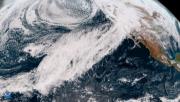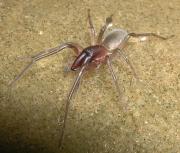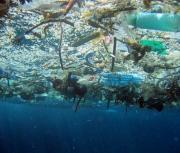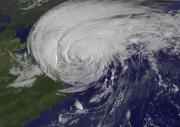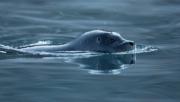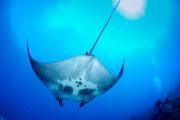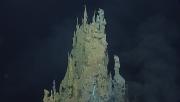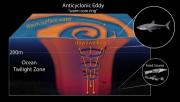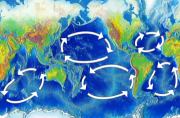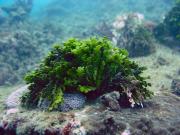Radio Program
Our regular Science and the SeaTM radio program presents marine science topics in an engaging two-minute story format. Our script writers gather ideas for the radio program from the University of Texas Marine Science Institute's researchers and from our very popular college class, Introduction to Oceanography, which we teach to hundreds of non-science majors at The University of Texas at Austin every year. Our radio programs are distributed at to commercial and public radio stations across the country.
Many Americans have learned a new term in the past few years: atmospheric river. Massive ribbons of water vapor have brought floods and epic snowfalls to the West Coast. And our warming climate could produce more intense examples in the years ahead.
An atmospheric river begins as warm ocean water evaporates and climbs into the sky. It forms a stream of water vapor that surfs along with the weather. It can be a few hundred miles wide and a thousand miles long, and carry several times more water than the Mississippi River.
A few years ago, some scientists in Australia got a tip from a city council member in a town in the state of Queensland, on the country’s northeastern coast: Some unusual spiders were appearing on the beaches of a nearby town during especially low tides.
The Great Pacific Garbage Patch isn’t what you think. It’s often depicted as a big “island” of junk—plastic bottles, fishing nets, sneakers, tires, and other debris. But that’s not the case. In fact, you could sail right through it and never even notice. That’s because, instead of an island, it’s more of a “soup”—tiny bits of plastic and other debris spread across an area twice the size of Texas, from the surface to depths of hundreds of feet.
A hurricane is like a giant power plant. In a single day, a run-of-the mill hurricane can produce 200 times as much energy as all the power plants in the entire world. And a major hurricane can produce several times more.
It might not sound right, but only about one percent of that comes from a hurricane’s winds. That’s still a lot of power—the equivalent of a 10-megaton H-bomb every 20 minutes.
Nobody likes the booms and cracks of pile drivers and airguns. They’re not only aggravating, but they can cause hearing loss and other health problems. So there are laws and regulations to control how those tools can be used.
There are similar regulations to protect the ears of marine mammals in offshore construction zones. The noise is an extra problem in the oceans because sound carries a lot farther underwater than in the air.
The giant oceanic manta ray is one of the most graceful fish on Earth—and one of the biggest. Its “wings” can span 20 feet or more. It flaps them gently as it glides through the ocean.
The rays generally are found in groups of no more than a thousand or so. Yet scientists recently discovered the largest congregation of them ever seen, off the coast of Ecuador—an estimated population of more than 22 thousand.
Many species of marine life are spread far and wide—across millions of square miles. But others are concentrated in patches no bigger than your backyard garden. And thousands of species can share the space.
If you’re one of the ocean’s major predators, you go where the food is—even if it might make you a little dizzy. Scientists recently found that tunas, sharks, and other big fish were more common inside eddies in parts of the Pacific Ocean than in the surrounding water. And not surprisingly, that’s where the food was.
Much of the water in the world’s oceans is herded like cattle being driven to market—not by cowboys on horseback, but by strong currents. Known as gyres, they help control global temperatures and the nutrients available in different parts of the oceans. They also round up floating debris, forming giant garbage patches.
Green doughnuts are typically something you want to avoid. But some giant green doughnuts on Australia’s Great Barrier Reef may actually be good for us. They may store carbon on the ocean floor. That keeps it out of the atmosphere, where it would add to climate change.

